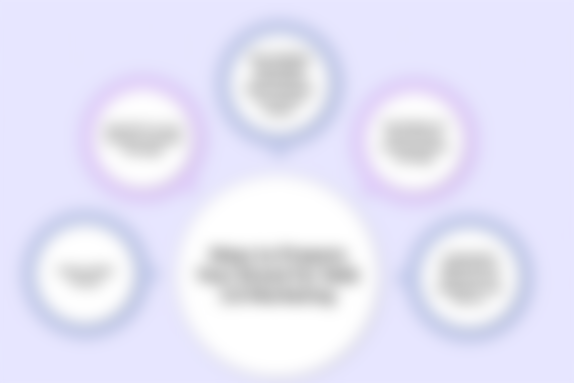From Centralized to Liberated: Why Web 3.0 Will Revolutionize Your Online World
Outline
1. Introduction
2. What is Web 3.0?
3. Key Features of Web 3.0
3.1 Decentralization
3.2 Interoperability
3.3 Data Ownership and Privacy
3.4 Smart Contracts and Blockchain
3.5 Enhanced User Experience4. Benefits of Web 3.0
4.1 Empowering Individuals4.2
Reducing Middlemen4.3
Transparency and Trust
4.4 New Opportunities and Business Models
5. Challenges and Limitations
5.1 Adoption and Infrastructure
5.2 Security and Scalability
5.3 Regulatory and Legal Concerns
6. Industries and Applications of Web 3.0
6.1 Finance and Banking
6.2 Supply Chain Management
6.3 Healthcare6.4 Education
7. How to Prepare for Web 3.0
7.1 Staying Informed
7.2 Learning New Skills
7.3 Embracing Decentralized Platforms
8. Conclusion
9. FAQs
9.1 What are the main differences between Web 2.0 and Web 3.0?
9.2 Is Web 3.0 only about blockchain technology?
9.3 Will Web 3.0 eliminate the need for traditional intermediaries?
9.4 Is Web 3.0 secure?
9.5 How long will it take for Web 3.0 to become mainstream?
1. Introduction
In today's digital age, the internet has become an integral part of our lives, transforming the way we connect, communicate, and conduct business. Over the years, we have witnessed the evolution from Web 1.0 to Web 2.0, where static web pages gave way to dynamic and interactive platforms. However, a new wave of transformation is on the horizon: Web 3.0. This article explores the concept of Web 3.0, its key features, benefits, challenges, and its potential to revolutionize the online world.
2. What is Web 3.0?
Web 3.0, also known as the decentralized web or the semantic web, refers to the next generation of the internet. Unlike its predecessors, Web 3.0 aims to create a more open, secure, and user-centric online ecosystem. It leverages emerging technologies such as blockchain, artificial intelligence, and decentralized networks to enable a paradigm shift in how we interact with digital platforms.

3. Key Features of Web 3.0
3.1 Decentralization
Decentralization lies at the core of Web 3.0. Unlike Web 2.0, where power and control are concentrated in the hands of a few centralized entities, Web 3.0 empowers individuals and eliminates single points of failure. Decentralized networks and protocols ensure that no single entity can manipulate or control the flow of information, providing greater transparency and resilience.
3.2 Interoperability
Interoperability is a crucial aspect of Web 3.0. It enables different applications and platforms to seamlessly communicate and share data, breaking down silos and creating a connected web of users
interoperable services. This means that users can access and utilize various applications and services without the need for multiple logins or data duplication. It paves the way for a more integrated and efficient online experience.
3.3 Data Ownership and Privacy
One of the fundamental principles of Web 3.0 is giving individuals full control over their data. With Web 2.0, user data is often collected, stored, and monetized by centralized platforms without explicit consent. Web 3.0 introduces mechanisms where users have ownership and sovereignty over their data. Through decentralized technologies like blockchain, users can securely manage their personal information and choose how and when to share it.
3.4 Smart Contracts and Blockchain
Web 3.0 heavily relies on blockchain technology and smart contracts. Blockchain provides a decentralized and tamper-proof ledger that ensures transparency and immutability. Smart contracts, on the other hand, enable self-executing agreements without intermediaries, reducing the need for trust in traditional business transactions. This opens up new possibilities for automated and secure interactions across various industries.
3.5 Enhanced User Experience
Web 3.0 aims to provide a superior user experience by leveraging emerging technologies. It incorporates advancements in artificial intelligence, virtual reality, augmented reality, and machine learning to create personalized and immersive digital experiences. Users can expect more intuitive interfaces, context-aware recommendations, and tailored content that aligns with their preferences and needs.

4. Benefits of Web 3.0
4.1 Empowering Individuals
Web 3.0 empowers individuals by giving them more control and ownership over their online presence. With decentralized platforms, users can participate in decision-making processes, contribute to the network's governance, and receive fair rewards for their contributions. This shift from centralized control to distributed networks fosters a more inclusive and democratic digital landscape.
4.2 Reducing Middlemen
Web 3.0 eliminates the need for traditional intermediaries in many transactions and processes. By leveraging blockchain and smart contracts, users can directly interact and transact with each other, bypassing intermediaries such as banks, marketplaces, or content distribution platforms. This not only reduces costs but also enhances efficiency and fosters peer-to-peer interactions.
4.3 Transparency and Trust
Web 3.0 promotes transparency and trust through its decentralized nature. As data and transactions are recorded on a distributed ledger, anyone can verify and audit the information. This increased transparency reduces the potential for fraud, manipulation, and censorship. Users can trust that the information they access is accurate and tamper-proof.
4.4 New Opportunities and Business Models
Web 3.0 introduces novel opportunities and business models. With the rise of decentralized finance (DeFi), individuals can participate in open financial systems, lending, and borrowing, with greater accessibility and inclusivity. Additionally, the concept of tokenization allows for fractional ownership, enabling new forms of investment and asset management. This opens up a wide range of possibilities for innovation and entrepreneurship.
5. Challenges and Limitations
5.1 Adoption and Infrastructure
For Web 3.0 to become mainstream, widespread adoption is crucial. However, adoption faces challenges due to the complexity of decentralized technologies and the need for user education. Additionally, the existing internet infrastructure may require significant upgrades to handle the increased demand and traffic generated by decentralized applications.
5.2 Security and Scalability
While Web 3.0 offers enhanced security through blockchain technology, it also presents new security challenges. Smart contracts, for example, may be susceptible to vulnerabilities and exploits if not properly audited and tested. Scalability is another concern as decentralized networks need to handle a large number of transactions without compromising speed or efficiency.
5.3 Regulatory and Legal Concerns
The decentralized nature of Web 3.0 poses regulatory and legal challenges. Traditional legal frameworks may struggle to adapt to the unique aspects of decentralized technologies and their global nature. Issues such as jurisdiction, data privacy, intellectual property rights, and regulatory compliance need to be addressed to ensure a harmonious integration of Web 3.0 into existing legal systems.

6. Industries and Applications of Web 3.0
6.1 Finance and Banking
Web 3.0 has the potential to revolutionize the financial industry. Decentralized finance (DeFi) platforms enable peer-to-peer lending, decentralized exchanges, and asset tokenization, providing greater financial inclusion and eliminating the need for traditional intermediaries. Smart contracts and blockchain-based identity verification systems can enhance security, transparency, and efficiency in financial transactions.
6.2 Supply Chain Management
Web 3.0 can bring transparency and traceability to supply chain management. With blockchain technology, stakeholders can track the entire lifecycle of products, ensuring authenticity, ethical sourcing, and fair trade practices. Smart contracts can automate contractual agreements between different parties in the supply chain, reducing friction and increasing efficiency.
6.3 Healthcare
In the healthcare industry, Web 3.0 can revolutionize data sharing, patient records management, and medical research. Blockchain-based systems can securely store and share sensitive patient data, allowing for better coordination among healthcare providers. Smart contracts can automate and streamline processes such as insurance claims and clinical trials, improving efficiency and reducing costs.
6.4 Education
Web 3.0 can transform the education landscape by enabling decentralized and personalized learning experiences. Blockchain-based credentials and certificates can provide verifiable and tamper-proof records of achievements. Smart contracts can facilitate peer-to-peer learning, incentivizing knowledge sharing and collaboration. Virtual reality and augmented reality technologies can create immersive educational environments, enhancing student engagement and understanding.

7. How to Prepare for Web 3.0
7.1 Staying Informed
To prepare for Web 3.0, it is essential to stay informed about the latest developments in decentralized technologies, blockchain, and emerging trends. Following industry experts, attending conferences and webinars, and joining online communities can provide valuable insights into the evolving landscape.
7.2 Learning New Skills
As Web 3.0 brings new technologies and platforms, acquiring relevant skills becomes crucial. Developing a foundational understanding of blockchain, smart contracts, data privacy, and cybersecurity can open up exciting opportunities in various industries embracing Web 3.0.
7.3 Embracing Decentralized Platforms
Exploring and using decentralized platforms and applications can provide hands-on experience with Web 3.0. Engaging with decentralized social networks, decentralized finance platforms, and other blockchain-based applications can help individuals adapt to the new paradigm and understand its potential.

8.Conclusion
Web 3.0 represents a paradigm shift in the online world, transforming the way we interact, transact, and share information. With its emphasis on decentralization, data ownership, and enhanced user experiences, Web 3.0 has the potential to empower individuals, reduce middlemen, foster transparency, and unlock new opportunities and business models. However, challenges such as adoption, security, scalability, and regulatory concerns need to be addressed for a seamless transition. By preparing ourselves, staying informed, and embracing the possibilities of Web 3.0, we can shape a liberated and more inclusive online world.
9.FAQs
9.1 What are the main differences between Web 2.0 and Web 3.0?
Web 2.0 focused on user-generated content, social media, and interactive platforms, whereas Web 3.0 emphasizes decentralization, data ownership, and the integration of emerging technologies like blockchain and AI.
9.2 Is Web 3.0 only about blockchain technology?
While blockchain technology plays a significant role in Web 3.0, it is not the sole component. Web 3.0 encompasses a broader vision of a decentralized and user-centric internet, where various emerging technologies are integrated to create a more secure, transparent, and personalized online experience.
9.3 Will Web 3.0 eliminate the need for traditional intermediaries?
Web 3.0 has the potential to reduce the reliance on traditional intermediaries by enabling direct peer-to-peer interactions. However, certain industries and processes may still require some form of intermediation, depending on specific use cases and regulatory requirements.
9.4 Is Web 3.0 secure?
Web 3.0 introduces enhanced security measures through the use of decentralized networks, cryptographic algorithms, and blockchain technology. However, it is important to note that the security of Web 3.0 platforms and applications also depends on proper implementation, regular audits, and user awareness regarding best security practices.
9.5 How long will it take for Web 3.0 to become mainstream?
The transition to Web 3.0 is an ongoing process and its mainstream adoption will depend on various factors, including technological advancements, regulatory frameworks, user acceptance, and infrastructure development. While some industries are already embracing Web 3.0 principles, it may take several years for it to become ubiquitous across the entire online landscape.
With the promise of decentralization, enhanced user experiences, and new opportunities, Web 3.0 is poised to revolutionize the online world. Embracing this shift requires understanding its key features, benefits, and challenges. By staying informed, acquiring relevant skills, and exploring decentralized platforms, individuals can prepare themselves for the exciting future that Web 3.0 holds. The liberation of the online world is within reach, and it's up to us to seize the opportunities it presents.
The End....
note: Hope y'all liked this article , if u did then like it and don't forget to contribute(flushed). ;)




